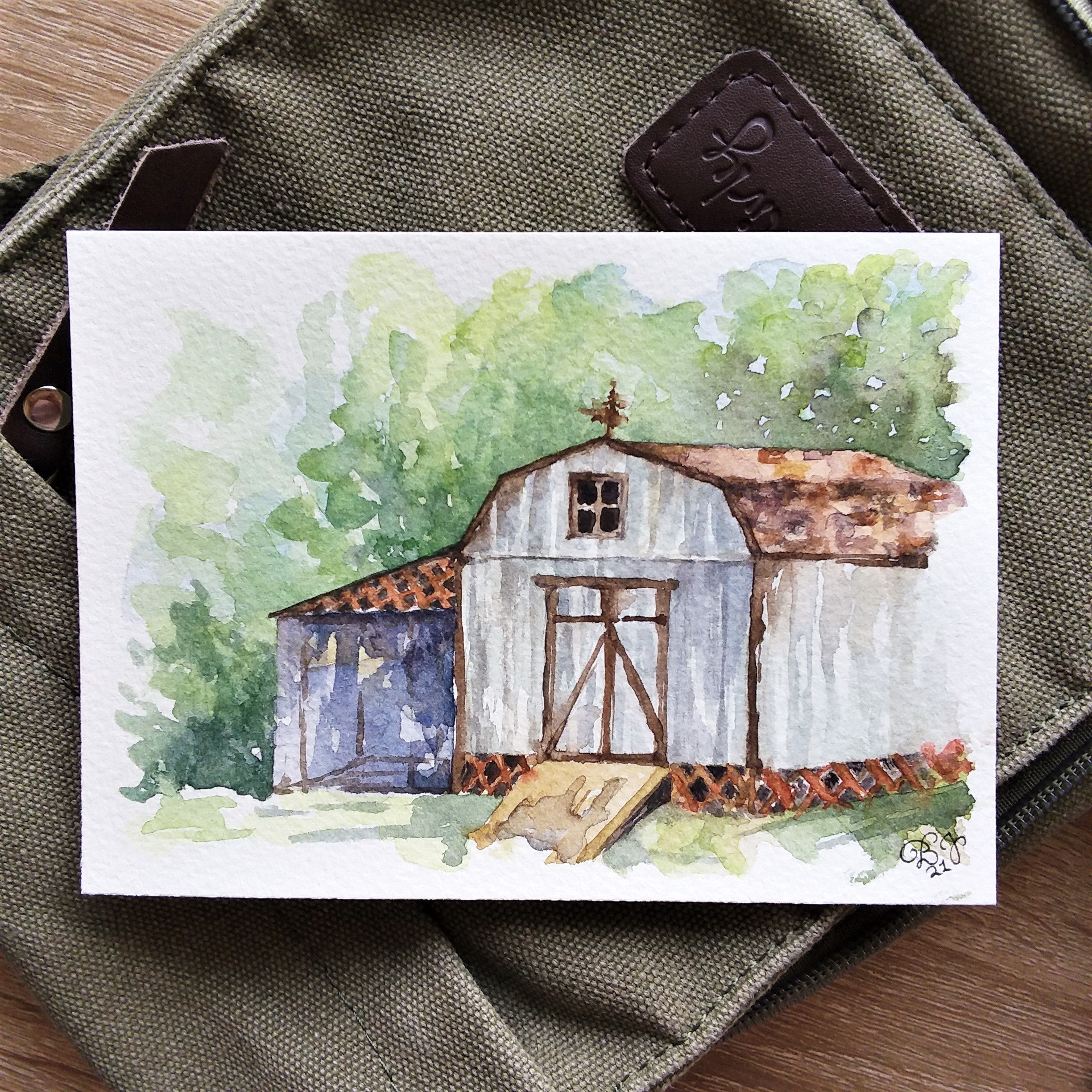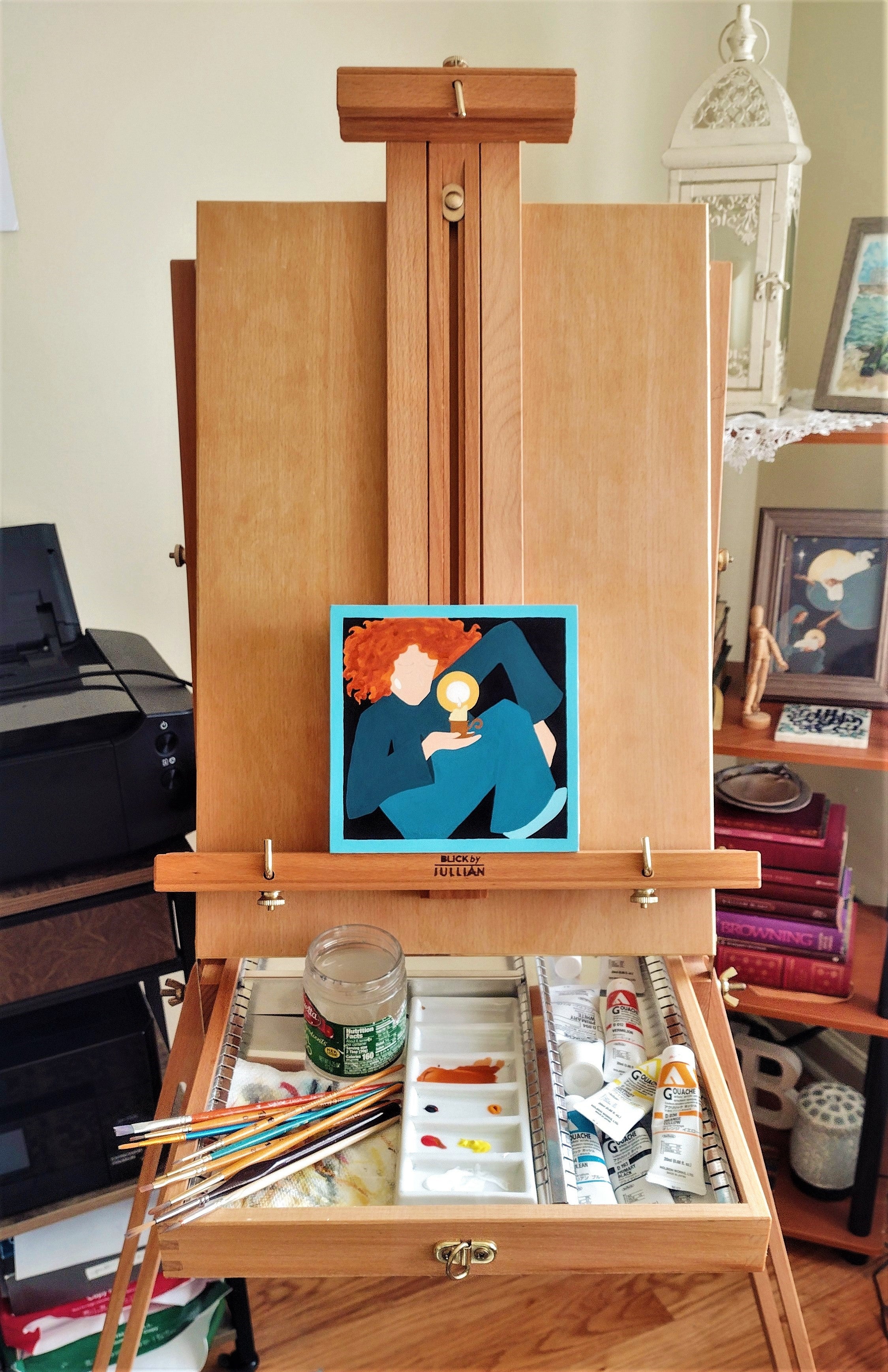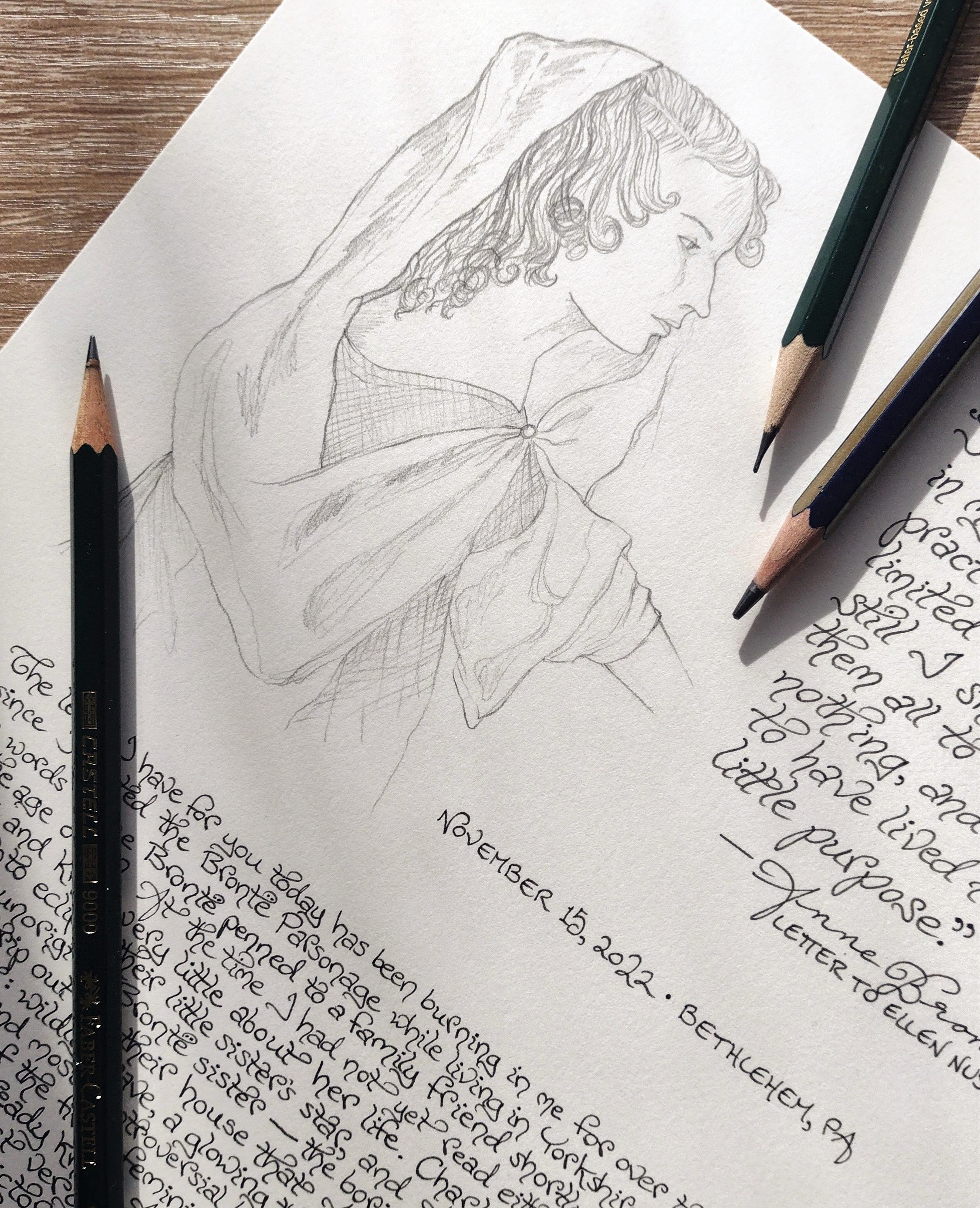8 Art Supplies I've Loved in 2022
1. This ETCHR Sketchbook
I found it at last: the perfect little sketchbook to tuck into my sketch bag and tote around with me on jaunts to the coast or happy excursions to my favorite local coffeeshop. For years now, I’ve been on the hunt for a line of hardbound sketchbooks that are made with really weighty watercolor paper and tiny enough to slip into a coat pocket. And ETCHR’s hardbound mixed media sketchbooks are IT. My preference is for the cold press in the A6 size (4.1" x 5.8"), but they come in four different sizes (as big as A4—or, as we would say in America, 8.3" x 11.7") and are available in hot press too! You can browse all the options here.
2. Faber-Castell 9000 Drawing Pencils
“The Castell 9000, a genuinely classic pencil, was launched by Count Alexander von Faber-Castell in 1905,” the company’s official website reads. Heh-HEM. But in all seriousness, these pencils are consistently great. It’s taken me awhile to land on a preferred brand of drawing pencil for the copious amounts of sketching and drafting I do, but after a solid decade of experimentation, I’ve settled comfortably into regularly reordering my Faber-Castells and not messing around with anything else. The graphite seldom snaps, and the tips don’t often come off in the sharpener in that particularly maddening way. There’s also a huge range of hardness options. I personally get the “Drawing Art Set of 12” in order to give myself plenty of choices, and then add on a supplementary pack of 2Bs, as these are the ones I really plow through.
 3. Plein Air Sketching Messenger Bag
3. Plein Air Sketching Messenger Bag
This little retro-looking crossbody bag has been my trusty plein air satchel for nearly four years now. It’s cheap. It’s simple. And it’s lightweight—ideal for long days of travel or hiking. I enjoy sketching very small, carrying along just a couple of pencils, a MOO eraser, some cheap paintbrushes, a few folded paper towels, a tiny bottle of water, a Schminke watercolor tin for 12 half-pans, and my ETCHR sketchbook or a folio of 5x7 watercolor postcards. However, if your portable painting set-up is more complicated—and you have a bigger budget—you may want to go with a larger bag, such as this Martin Messenger Bag that includes a removable brush case, an outside spot for your water container, and multiple handy compartments for supplies. (I don’t own that one myself, but have heard good things about it.)
 4. Ampersand’s Hardwood Floater Frames
4. Ampersand’s Hardwood Floater Frames
Okay, so they certainly aren’t a budget framing option, but Ampersand’s hardwood floater frames are a dreamy finishing touch for your favorite paintings on cradled panels, and come with all the screws and hanging hardware you need. You can get them in ⅞” or 1&½” thickness, and the ⅞ option includes risers that allow you to also frame pieces on flat panels or ¾” canvases. These frames are available in three different finishes (maple, white, & black) and I’ve tried all three. You can browse the full range of the options here.
 5. Blick’s Archival Storage Boxes
5. Blick’s Archival Storage Boxes
In my little world, 2022 has been a year for many new things. It’s been the year of gouache paint and wooden panels. It’s been the year of varnishes and finishing wax. And it’s been the Year of Archival Storage Boxes. But for real. This year I began creating expensive framed original pieces I really care about, and these need storing and transporting to gallery shows and exhibits. I only paint with professional-grade materials, and my work is valuable to me, so I need to store it in a space-efficient manner that doesn’t involve stacking paintings directly on top of one another (as this can damage the varnished surfaces of the paintings) or storing them against any material that contains acid (as this can significantly shorten the lifetime of artwork). Archival storage boxes are acid-free and designed to keep paintings protected from the elements without putting them in contact with anything that might damage them. When not on display in an art show, I keep all my yet-to-be-sold paintings in these archival storage boxes from Blick, and I love them. They provide secure storage for my work and also give me a convenient and safe way to carry paintings around when I need to drop off or pick up at galleries. (I’ve also purchased two of these thicker Bigso Document Boxes for my chunky mini seascapes that are nearly 2 inches thick in their frames and can’t quite fit in the Blick boxes.)
 6. Krylon Kamar Spray Varnish
6. Krylon Kamar Spray Varnish
If you’ve been following my painting for any length of time, you probably already know that most of my work this year has been varnished gouache paintings set in floater frames and displayed without glass. But wait! Isn’t gouache a water-based medium? How can you varnish it without reactivating the paint? Well, happily, Krylon’s Kamar Varnish is suitable for water-based media like gouache and watercolor. You just need to apply it in thin coats, leaving enough time between applications for the varnish to dry to the touch. Although I usually try to avoid spray varnish because of the toxic fumes it releases, I haven’t found a better solution for varnishing gouache since varnish applied with a brush will immediately ruin a gouache painting. Many people think gouache shouldn’t be varnished at all, but unvarnished gouache paintings have to be displayed behind glass since even the slightest touch of moisture will destroy them. Since I personally don’t like displaying my paintings behind glass because I feel it introduces a kind of separation between the viewer and the painting, I opt for varnish. And to be honest? I really do enjoy the way varnish makes my gouache paintings look more like oil paintings, and how dramatically it ups the contrast and luster of the work. [Note: this spray varnish is just the first step in my varnishing process, and the paintings shown in the photo have also been treated with an isolation coat by Golden and several layers of this wonderful gloss UV varnish by Winsor and Newton.]
 7. Blick’s Premier Wooden Panels
7. Blick’s Premier Wooden Panels
After years of painting mostly small illustrations on paper, I decided at the end of last year that I wanted to switch over to a sturdier and more durable painting surface as I began creating work to tote around to gallery shows. However, I’ve never been able to get excited about canvas. My paintings are small and heavily-detailed, and I find the texture of canvas unwieldy and distracting in smaller paintings. Consequently, I spent about half of 2022 on the hunt for a new preferred surface for my gouache and acryla gouache paintings, and landed at last on a system I’m thoroughly loving. My process consists of mounting sheets of hot press Arches watercolor paper to cradled wooden panels using Golden’s gel gloss medium (which acts as the glue) and one of Speedball’s printmaking brayers (to apply even pressure across the surface for a smooth and professional mount). I tried out different panel options in the beginning, but have landed on Blick’s line of premier basswood panels. These hardwood panels are a little pricier than Blick’s studio panels (made from pine—a softer wood), but having hardwood is important to me as it is more solid and doesn’t get so easily banged up, and the price difference is quite small.
 8. Blick French Easel by Jullian
8. Blick French Easel by Jullian

This French-style pochade box easel is the newest addition to my developing studio space. I've only had it for a couple of weeks now, but after years of painting hunched over a desk or using cheap aluminum easels that tip, flip, and slip, I'm in love with this beautiful beechwood (WOOD!) easel. Aside from its fetching appearance, one of my favorite things about this easel is all the built-in workspace. A drawer that pulls out in the front is perfect for parking my palette, cleaning towels, paint tubes, water cup, and brushes while I'm in the middle of painting. It enables me to set up without a desk or work-table nearby, and that freedom is a huge encouragement to paint regularly—even when I only have a short space of time in which to work. Although I know it isn't going to be an option for everyone (for me personally, it's taken a couple years of working as a full-time painter to feel I could afford something like this), it really is quite reasonably-priced for what it is. While wooden easels capable of accommodating large canvases can easily cost hundreds of dollars, this one is currently on offer on Blick's website for just $130.



We have learnt so much from your experiences, thank you for sharing.